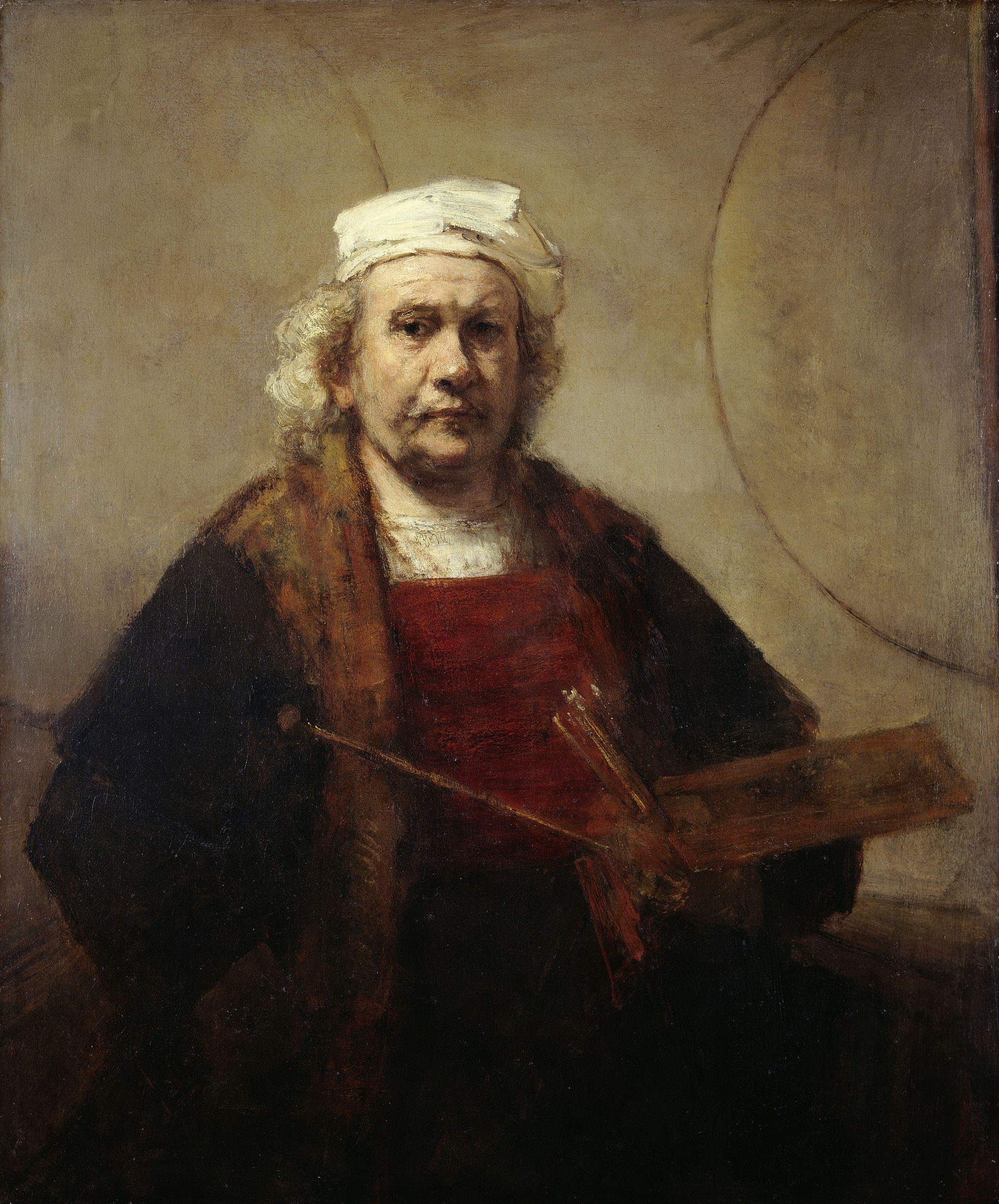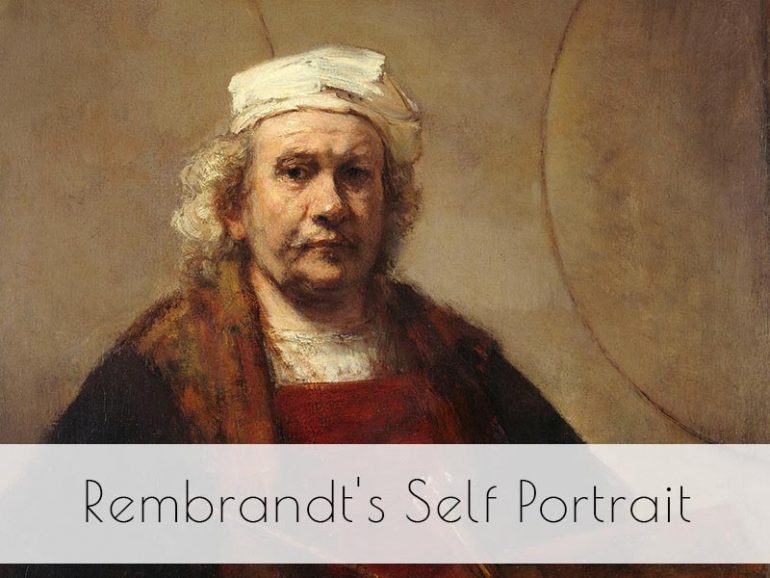At first glance, “Self-Portrait with Two Circles” captivates with its arresting presence. Rembrandt, depicted in a contemplative pose, gazes out at the viewer with piercing intensity. Yet, it’s the presence of two circles sketched lightly behind him that adds an intriguing layer of mystery to the composition. Scholars have speculated endlessly about the meaning of these circles, with interpretations ranging from symbols of the artist’s introspection to representations of the cosmos or the cyclical nature of life.
The use of chiaroscuro, a hallmark of Rembrandt’s style, further enhances the painting’s depth and emotional resonance. The interplay of light and shadow lends an almost ethereal quality to the artist’s visage, inviting viewers to peer beyond the surface and into the recesses of Rembrandt’s soul.
To understand the significance of “Self-Portrait with Two Circles,” we must first acquaint ourselves with the man behind the canvas – Rembrandt van Rijn. Born in Leiden, Netherlands, in 1606, Rembrandt rose to prominence during the Dutch Golden Age, establishing himself as one of the greatest painters and printmakers of all time.
Rembrandt’s self-portraits offer a fascinating glimpse into his psyche and evolution as an artist. Unlike many of his contemporaries who depicted idealized versions of themselves, Rembrandt embraced his own likeness with unflinching honesty. Through meticulous observation and introspection, he captured the nuances of his aging visage, charting the passage of time with each brushstroke.

Practice of Self-Portraiture
One cannot discuss Rembrandt’s self-portraits without acknowledging the sheer volume of these works. Over the course of his career, Rembrandt produced an astonishing array of self-portraits, ranging from bold and assertive to introspective and pensive. But why did Rembrandt paint so many self-portraits?
One theory posits that Rembrandt’s self-portraits served as a form of self-exploration and introspection. Through the act of painting himself, he grappled with questions of identity, mortality, and the human condition. Each self-portrait became a mirror reflecting not only his physical likeness but also the complexities of his inner world.
“Self-Portrait with Two Circles” stands as a testament to Rembrandt’s enduring legacy as both an artist and a philosopher. In this captivating work, he invites us to contemplate the mysteries of existence and the ever-shifting landscape of the self. Through his masterful use of light, shadow, and symbolism, Rembrandt transcends the confines of portraiture, offering viewers a profound meditation on the nature of being.
For art students and enthusiasts alike, “Self-Portrait with Two Circles” serves as a poignant reminder of the power of self-reflection and the timeless allure of Rembrandt’s genius. As we gaze upon this iconic masterpiece, we are reminded that true artistry lies not only in technique but also in the ability to capture the essence of the human experience.
In the hushed halls of museums and galleries, Rembrandt’s self-portraits continue to exert their mesmerizing pull, inviting us to confront our own reflections and ponder the enigmatic circles of existence.
Aspiring artists, take heed – in the realm of self-portraiture, there is much to be learned from the master himself.
If you would like to receive a roundup of all of our blog posts once a week to keep you inspired in your inbox, why not sign up to our newsletter. You can access our sign up at the top of our page. If you are a London Art College student and you would like your artwork featured here, drop us a line at any time.

